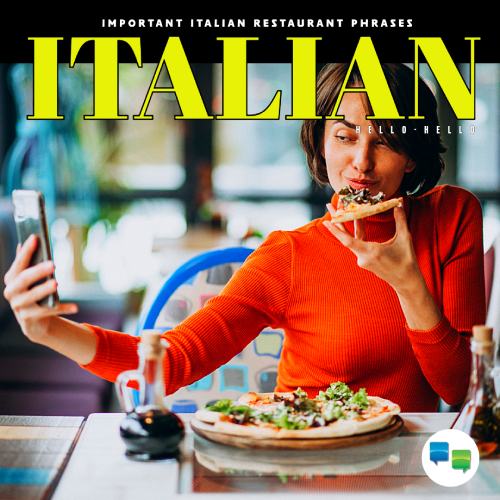Dining in an Italian restaurant can be a delightful experience, especially when you know a few key phrases that can help you navigate the menu and interact with the staff. Italy is famous for its rich culinary tradition, and understanding how to order in Italian can make your dining experience smoother and more enjoyable.
Here’s a comprehensive guide to essential Italian restaurant phrases that will help you order food with confidence and make the most of your meal as shared by Hello-Hello, which is the leading Italian language learning app developer for iOS and Android devices in this blog.
1. Greetings and Seating
When you first enter the restaurant, a warm greeting sets a positive tone for your experience:
- “Buongiorno” (Good morning) or “Buonasera” (Good evening): Use these greetings to acknowledge the staff when you arrive, depending on the time of day.
- “Ho una prenotazione” (I have a reservation): If you’ve made a reservation, let the host know right away.
- “Posso avere un tavolo per [numero] persone?” (Can I have a table for [number] people?): This phrase will help you request a table for your group size.
2. Ordering Food
Once seated, you’ll need to communicate your food preferences and ask questions about the menu:
- “Il menù, per favore” (The menu, please): If the menu isn’t immediately provided, use this phrase to request it.
- “Cosa mi consiglia?” (What do you recommend?): When unsure about what to order, asking the server for recommendations can lead to discovering some of the restaurant’s specialties.
- “Sono allergico/a a [ingrediente]” (I’m allergic to [ingredient]): It’s important to inform the staff of any allergies to avoid any adverse reactions.
3. Specific Dishes
When you’re ready to place your order, being specific about your choices will ensure you get exactly what you want:
- “Vorrei ordinare [piatto]” (I would like to order [dish]): Use this phrase to clearly state what you’d like to order.
- “Per antipasto, prenderò [nome del piatto]” (For a starter, I will have [dish name]): Indicate your choice for the appetizer.
- “Per secondo, prenderò [nome del piatto]” (For the main course, I will have [dish name]): Specify your choice for the main course.
4. Special Requests and Modifications
Sometimes, you might have special requests or need to make modifications to your order:
- “Senza [ingrediente], per favore” (Without [ingredient], please): Request to have a particular ingredient omitted from your dish.
- “Poco piccante” (A little spicy) or “Non piccante” (Not spicy): Indicate your preference for spice level if the dish is known to be spicy.
5. Asking for the Bill
When you’ve finished your meal and are ready to pay, use these phrases to request the bill:
- “Il conto, per favore” (The check, please): Use this phrase to ask for the bill.
- “Posso pagare con carta di credito?” (Can I pay with a credit card?): Inquire if credit card payment is accepted.
6. Expressing Gratitude
Finally, expressing thanks for good service and delicious food will leave a positive impression:
- “Grazie” (Thank you): Use this to show your appreciation to the staff.
- “È stato tutto delizioso” (Everything was delicious): Compliment the food if you enjoyed your meal.
Additional Tips
- Practice pronunciation: While most Italians will understand English, making an effort to pronounce Italian phrases correctly shows respect for their culture and can enhance your dining experience.
- Be polite: Use “per favore” (please) and “grazie” (thank you) frequently. Italians value politeness and it will be appreciated.
Armed with these phrases, you’re ready to enjoy an Italian dining experience with greater ease. Buon appetite!
Learn Italian (Hello-Hello)
Learn Italian Phrases, Words, and Conversations with the top-selling language-learning app! Learning Methodology Based on Animation, Cartoon Scripts, Word Games, and more. Learn to communicate effectively from LESSON 1! Hello-Hello offers 30 conversational lessons based on real-life situations rather than a collection of out-of-context words and phrases. Dialogues are presented and then broken down into sentence by sentence where you can practice pronunciation and writing skills
The research-based methodology was developed in collaboration with the most prestigious institution for language teachers and professionals: The American Council on the Teaching of Foreign Languages – ACTFL



